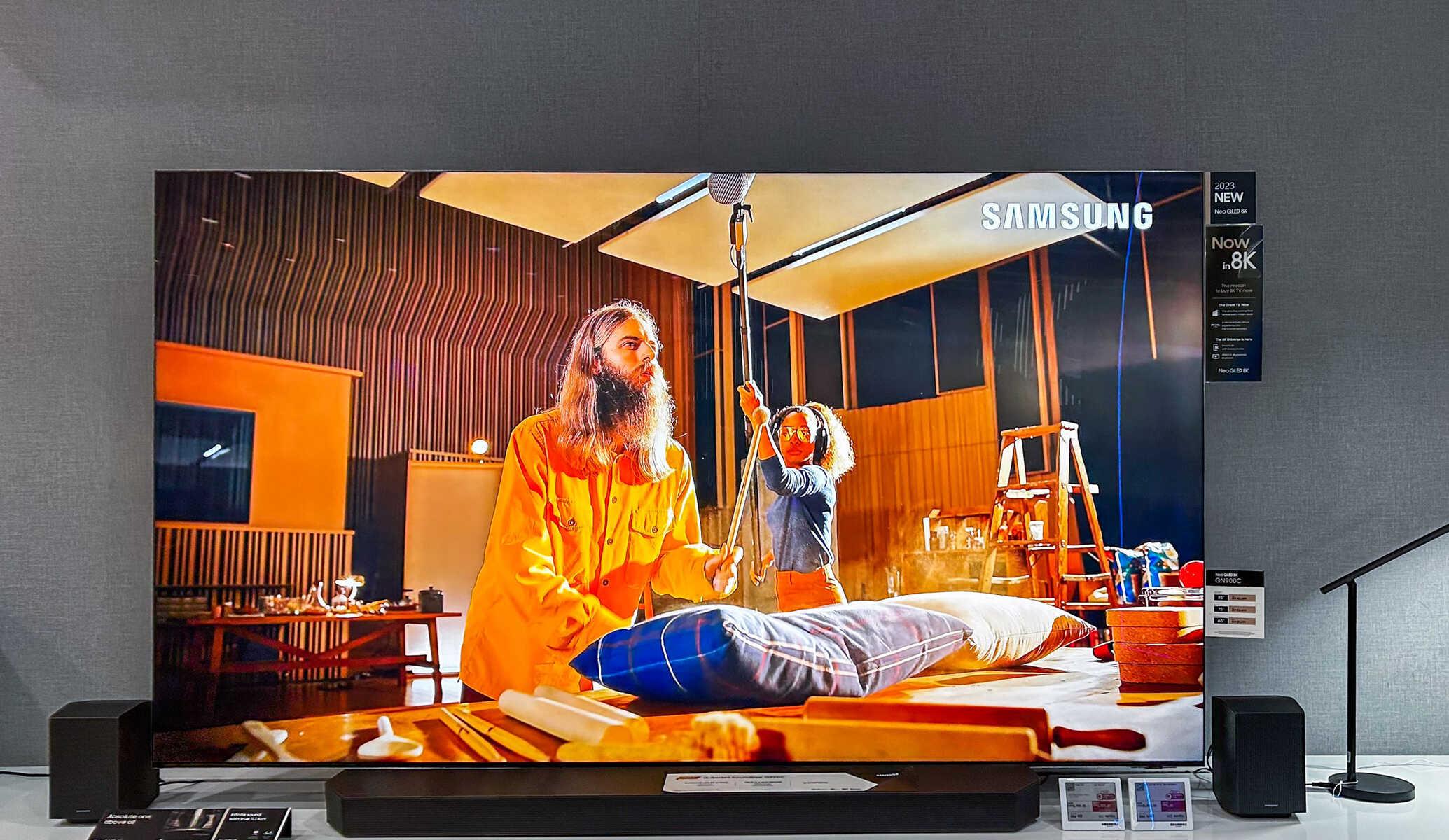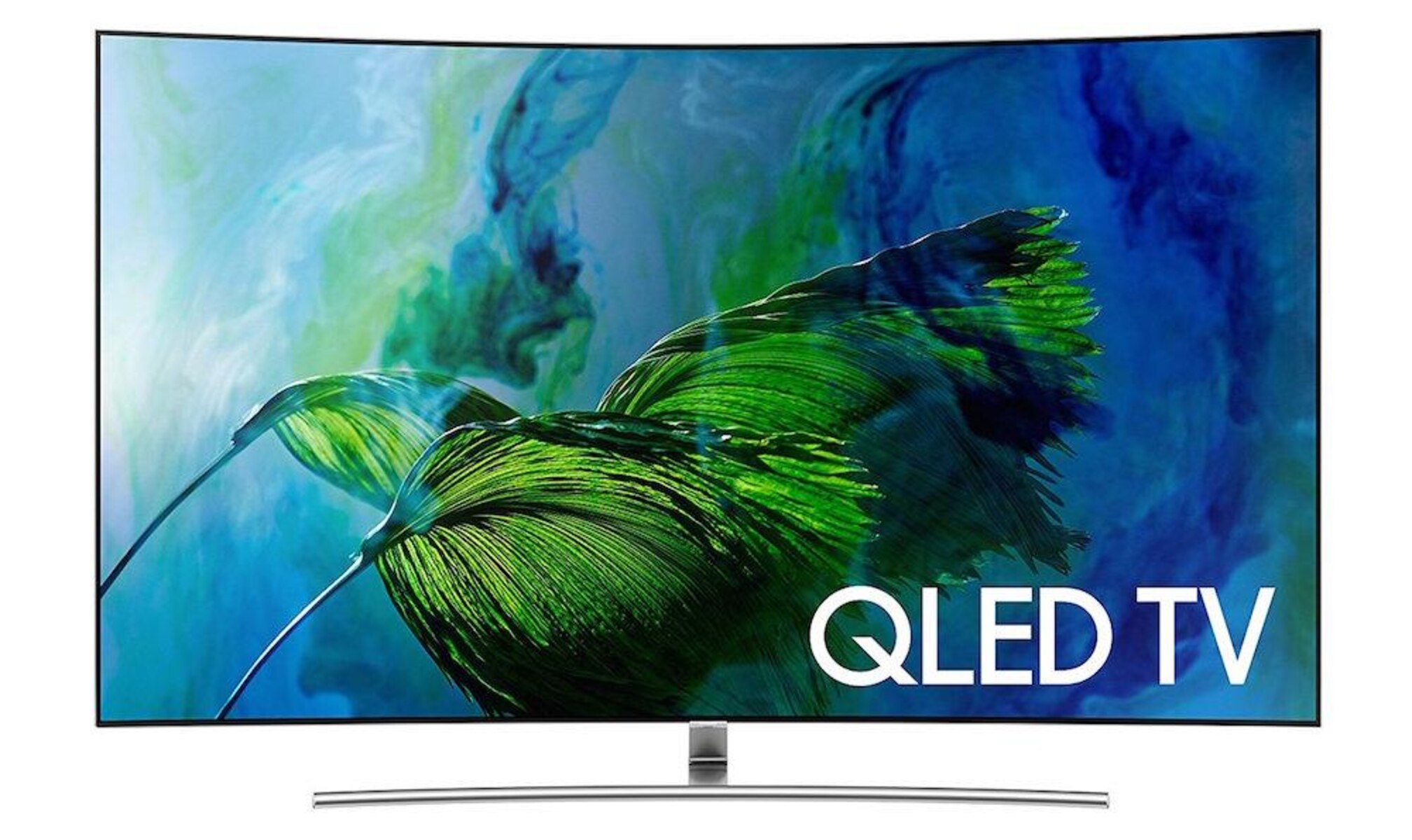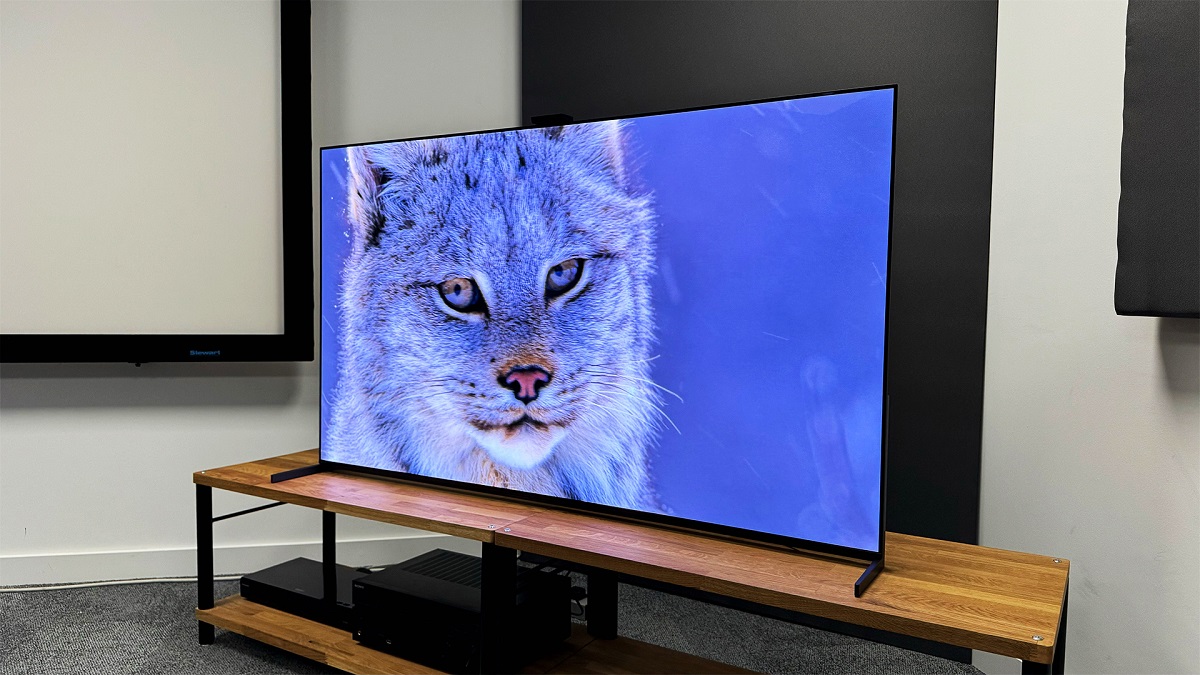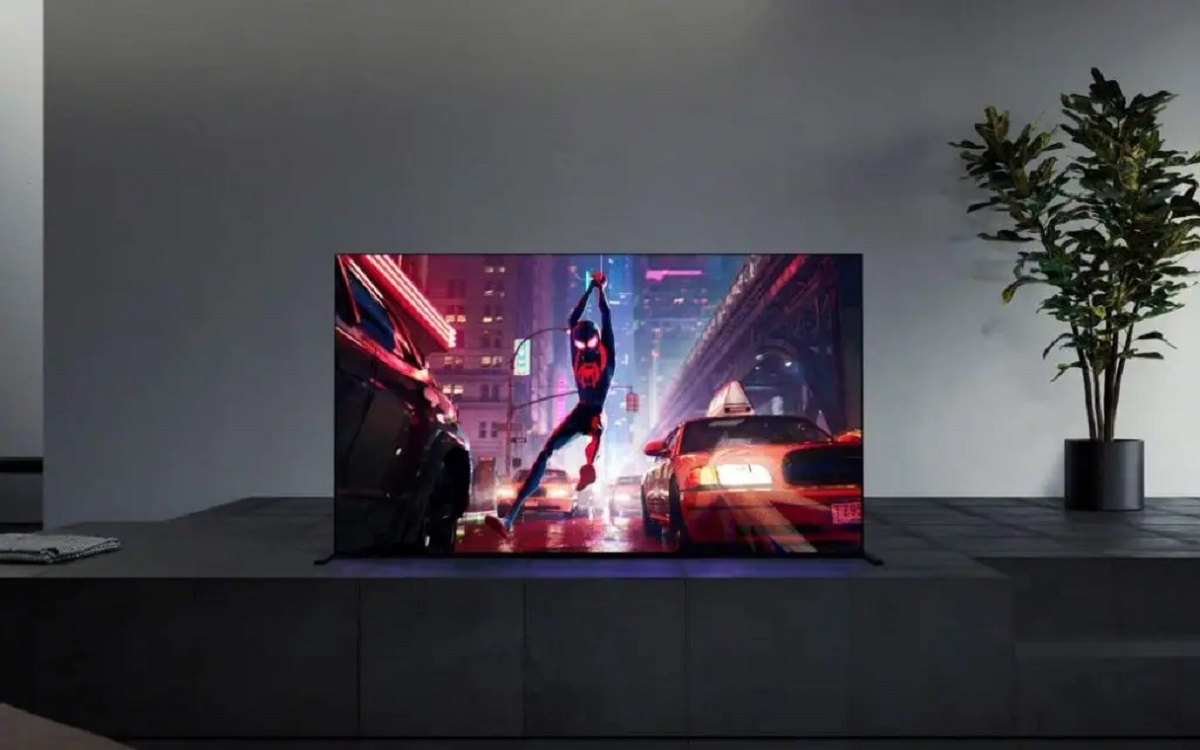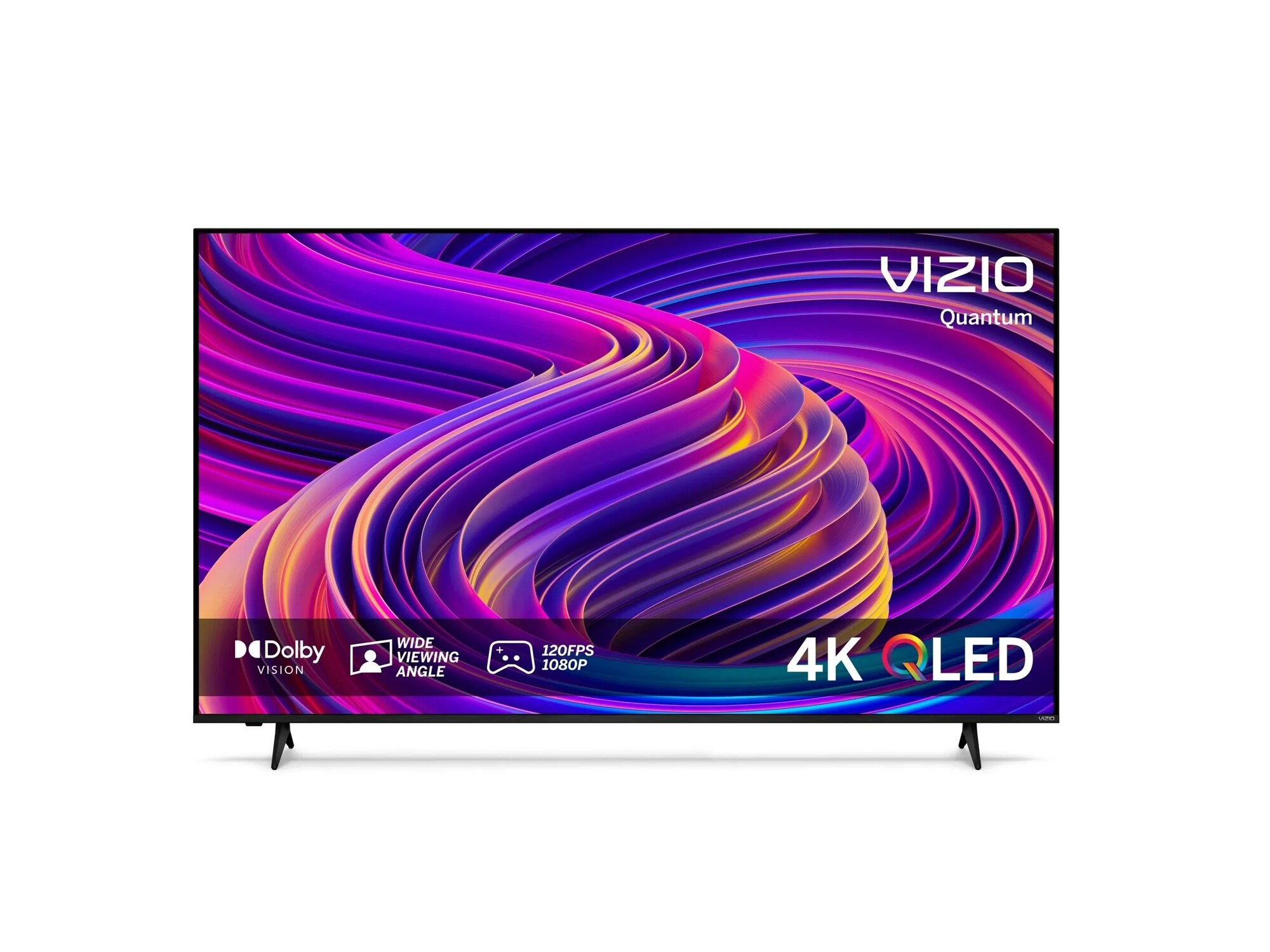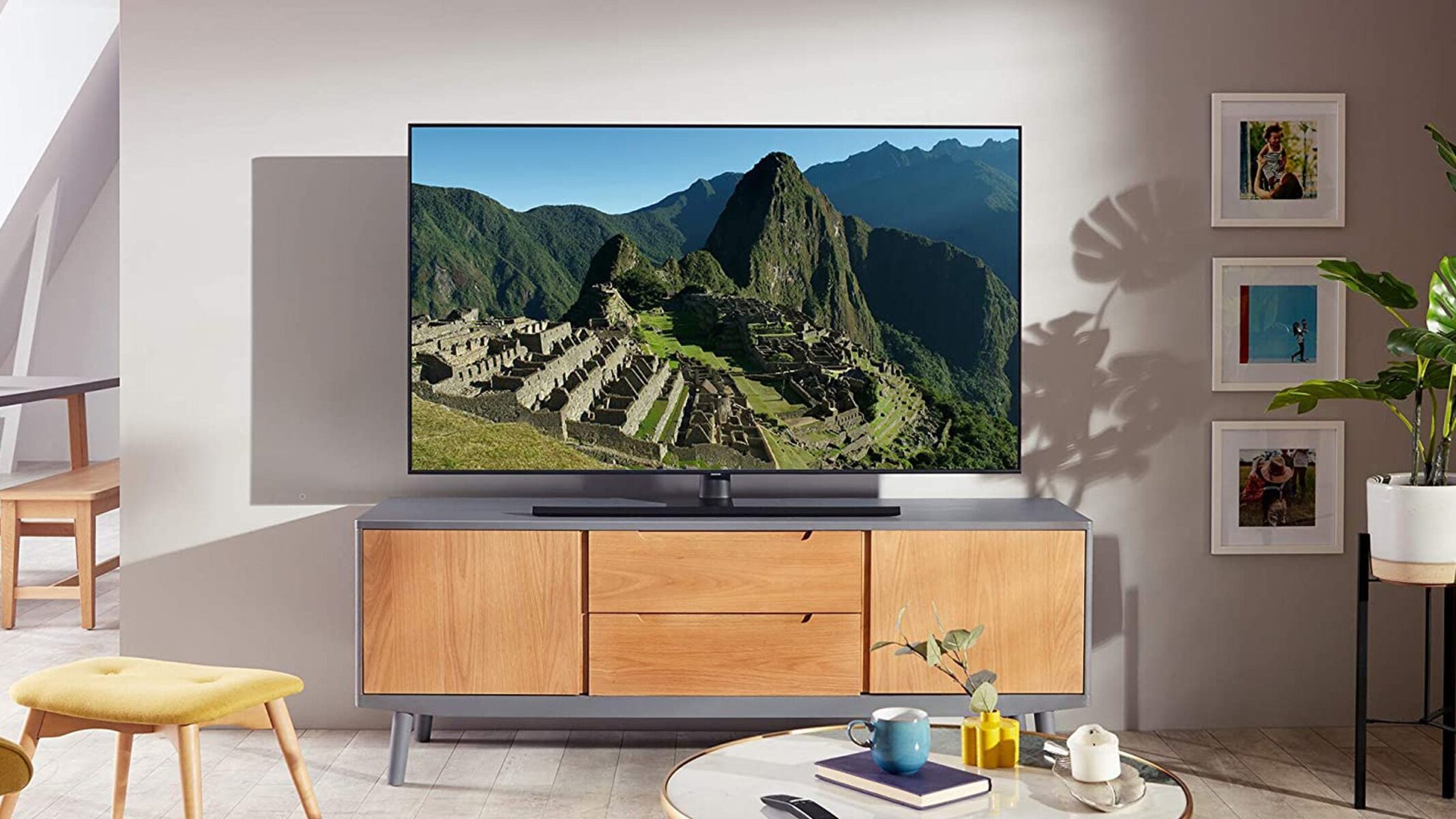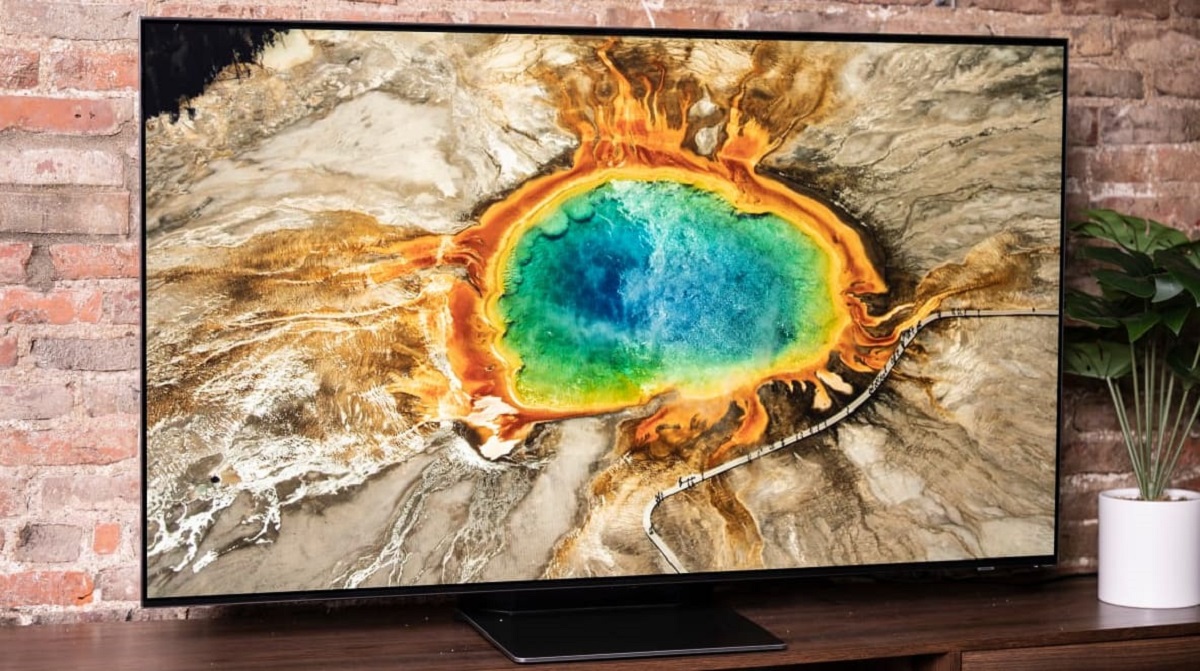Introduction
Quantum dots have revolutionized the world of display technology, particularly in the case of QLED TVs. These microscopic nanocrystals are at the forefront of modern television innovation, delivering stunning visuals and an enhanced viewing experience. From vibrant colors to improved brightness and energy efficiency, quantum dots play a significant role in shaping the future of television.
But what exactly are quantum dots? How do they work in QLED TVs? And what benefits do they offer? In this article, we will explore the fascinating world of quantum dots and their role in display technology.
Quantum dots, also known as nanocrystals or semiconductor nanocrystals, are tiny particles that range in size from 2 to 10 nanometers. Their unique properties allow them to emit light of different colors when excited by an energy source. Unlike traditional liquid crystal displays (LCDs), which rely on a backlight to produce colored pixels, quantum dots can directly emit light, resulting in more accurate and vibrant colors.
The use of quantum dots in QLED TVs stands out as a major advancement. QLED stands for “Quantum Dot Light Emitting Diode,” indicating that these televisions utilize quantum dots to create a superior visual experience. By integrating quantum dots with an LED backlight, QLED TVs are capable of delivering stunning picture quality with exceptional color accuracy and brightness.
So, how exactly do quantum dots work in a QLED TV? In a typical QLED TV, blue LED lights serve as the primary light source. These blue lights pass through a layer of quantum dots, which absorb the blue light and re-emit it as a combination of red and green light. This mixture of colors, combined with the blue light, creates a broader spectrum of colors, resulting in more detailed and lifelike images on the screen.
The use of quantum dots in QLED TVs offers several benefits that contribute to an exceptional viewing experience. Firstly, quantum dots provide a high color accuracy and a wide color gamut, allowing for more realistic and vivid color reproduction. This means you can enjoy movies, shows, and games as the creators intended, with colors that are true to life.
In addition, quantum dots enhance the brightness and contrast levels of a QLED TV. The ability to emit pure, intense colors results in brighter highlights and deeper blacks, providing a more dynamic and immersive visual experience. Whether you’re watching a thrilling action movie or a scenic nature documentary, the enhanced contrast adds depth and detail to every scene.
Furthermore, quantum dots contribute to the energy efficiency of QLED TVs. By converting blue light into red and green light, quantum dots ensure that the TV consumes less power while maintaining superior image quality. This not only benefits the environment by reducing energy consumption but also saves you money on your electricity bills.
Overall, quantum dots have emerged as a game-changer in display technology, particularly in QLED TVs. Their ability to deliver accurate colors, increased brightness, and energy efficiency makes them a sought-after feature for enthusiasts and casual viewers alike. As the technology continues to evolve, quantum dots are likely to shape the future of television, offering even more stunning and immersive visual experiences.
What Are Quantum Dots?
Quantum dots are incredibly tiny particles that possess unique properties due to their nanoscale dimensions. These particles are typically made of semiconductor materials such as cadmium selenide, cadmium sulfide, or indium phosphide, which allow them to exhibit remarkable optical properties.
At such a small size, quantum dots’ behavior is governed by the principles of quantum mechanics. Due to their quantum confinement effect, when quantum dots are excited by an energy source, such as light or electricity, they exhibit distinct electronic and optical behavior compared to their bulk counterparts.
The size of quantum dots determines the specific colors of light that they emit when stimulated. This is known as the quantum size effect. By precisely controlling the size of the quantum dots during their synthesis, it is possible to tune their emission wavelength across the visible spectrum. This unique characteristic gives quantum dots the ability to emit pure, vibrant colors.
Quantum dots owe their name to their discrete energy levels, known as energy bands. These energy levels are quantized due to the confinement of electrons and holes within the nanoscale dimensions of the particles. Similar to the energy levels of an atom, quantum dots have discrete energy states that determine the wavelengths of light they can absorb and emit.
The ability of quantum dots to emit light of different wavelengths makes them an ideal candidate for applications in display technology. By combining different sizes of quantum dots, it becomes possible to create a broad spectrum of colors that can be used to produce high-quality images on screens.
Furthermore, the optical properties of quantum dots can be further enhanced by manipulating their surface properties. By coating the surface of quantum dots with an additional layer, they become more stable and exhibit improved emission efficiency. This surface engineering allows the quantum dots to maintain their optical properties over time and ensures their compatibility with various display technologies.
Due to their remarkable optical properties, quantum dots have found applications in a variety of fields. Apart from display technology, they are also used in solar cells, LED lighting, medical imaging, and even in biological and chemical sensors.
In summary, quantum dots are nanoscale particles made of semiconductor materials that exhibit unique optical and electronic properties. Their ability to emit vibrant colors, controlled by their size, makes them highly valuable for display technology. With ongoing advancements in quantum dot research, the applications of these remarkable nanoparticles are likely to expand, offering even more exciting possibilities in the future.
Quantum Dots in Display Technology
Quantum dots have made a significant impact on the field of display technology, revolutionizing the way we perceive and experience visuals on screens. Their unique optical properties have paved the way for more vibrant, accurate, and energy-efficient displays.
One of the most notable applications of quantum dots in display technology is their use in liquid crystal displays (LCDs). By incorporating quantum dots as a color filter in LCD panels, the traditional drawbacks of LCD technology, such as limited color gamut and lower color accuracy, can be overcome. This results in displays with improved color reproduction and a wider range of vibrant colors.
Quantum dots have also played a crucial role in the development of QLED (Quantum Dot Light Emitting Diode) technology in television displays. In QLED TVs, quantum dots are utilized as a light source by converting blue light emitted from LEDs into more saturated and accurate red and green light. This combination of colors, along with the blue light, produces a wider color gamut and more precise color representation, resulting in lifelike and immersive viewing experiences.
Compared to other display technologies, QLED TVs with quantum dots offer several advantages. Firstly, they provide a higher color accuracy, allowing for more realistic and true-to-life colors. This is achieved by the precise emission spectra of quantum dots, which can be tightly controlled during the manufacturing process.
Furthermore, quantum dots enable a wider color gamut, meaning they can reproduce a larger range of colors compared to traditional displays. This expanded color palette results in more vibrant and saturated images, enhancing the overall visual experience.
In addition to color accuracy and wider color gamut, quantum dots also contribute to the increased brightness and contrast levels in display technology. By efficiently converting blue light into red and green light, quantum dots enhance the overall brightness of the display, making images appear more vivid and lifelike. Moreover, the ability to emit pure colors allows for a higher contrast ratio, with deeper blacks and brighter highlights, resulting in a more dynamic visual experience.
Another advantage of quantum dots in display technology is their energy efficiency. Traditional displays, such as LCDs, require a backlight to illuminate the screen, resulting in a significant energy consumption. Quantum dot-based displays, on the other hand, emit light directly, minimizing the need for excessive backlights and reducing power consumption. This leads to more energy-efficient displays that are environmentally friendly and cost-effective for consumers.
With their unique optical properties and ability to deliver superior color accuracy, wider color gamut, increased brightness, and energy efficiency, quantum dots have undeniably transformed the landscape of display technology. Their incorporation into LCD panels and QLED TVs has elevated the viewing experience, offering consumers a more immersive and visually stunning journey into their favorite movies, TV shows, and games.
How Do Quantum Dots Work in a QLED TV?
Quantum dots play a crucial role in the operation of QLED (Quantum Dot Light Emitting Diode) TVs, contributing to their exceptional picture quality and vibrant color reproduction. Understanding how quantum dots work in a QLED TV requires delving into their unique optical properties and their integration with LED technology.
The process begins with a blue LED backlight, which serves as the primary light source in a QLED TV. This blue light consists of photons with high energy levels. To achieve a wide color gamut and accurate color representation, quantum dots are used in conjunction with this blue LED backlight.
The quantum dots in a QLED TV act as a color converter. They are designed to absorb the blue light emitted by the LED and re-emit it as a combination of red and green light. This transformation is made possible by the quantum dots’ particle size and composition, which determine the wavelengths of light they can absorb and emit.
When the blue light from the LED backlight passes through a layer of quantum dots, some of the blue photons are absorbed by the quantum dots. As the absorbed photons interact with the quantum dots’ electrons, the energy is transferred, causing the quantum dots to enter an excited state.
After being excited, the quantum dots quickly release the absorbed energy in the form of photons. However, the emitted photons have longer wavelengths and correspond to the red and green regions of the visible spectrum. The quantum dots’ ability to emit these specific colors is determined by their size and composition, allowing for precise control over the emitted light’s spectral properties.
The emitted red and green light from the quantum dots combines with the remaining blue light, resulting in a broad color spectrum. This mixture of colors enhances the TV’s overall color gamut and enables the display to accurately reproduce a wide range of hues and shades, making images appear more vibrant and lifelike.
The integration of quantum dots in QLED TVs offers several advantages over traditional display technologies. By directly emitting light of specific colors, quantum dots eliminate the need for color filters used in conventional LCDs. This eliminates the risk of color leakage and significantly enhances color accuracy.
In addition, quantum dots in QLED TVs provide better overall brightness and contrast levels compared to traditional displays. The pure, saturated colors produced by the quantum dots result in brighter highlights and deeper blacks, enhancing the dynamic range and adding depth to the displayed content.
Overall, the use of quantum dots in QLED TVs allows for highly accurate color reproduction, a wide color gamut, increased brightness, and improved contrast levels. Their integration with LED backlights enables QLED TVs to deliver exceptional picture quality, making them a popular choice among consumers seeking a visually immersive and lifelike viewing experience.
Benefits of Quantum Dots in QLED TVs
The incorporation of quantum dots in QLED (Quantum Dot Light Emitting Diode) TVs offers a range of benefits that greatly enhance the viewing experience. From superior color accuracy to increased brightness and energy efficiency, quantum dots play a crucial role in delivering stunning visuals on QLED displays.
One of the key advantages of quantum dots in QLED TVs is their ability to provide high color accuracy and a wide color gamut. Quantum dots can emit pure and saturated colors, resulting in more precise and true-to-life color reproduction. This means that every hue and shade on the screen appears as the creator intended, ensuring a more immersive and visually appealing experience.
The wider color gamut of QLED TVs with quantum dots allows for a broader range of colors to be displayed, resulting in more vibrant and realistic images. With a larger palette of colors to choose from, QLED displays can reproduce a wider range of shades and hues, making scenes appear more vivid and captivating.
Additionally, quantum dots contribute to the increased brightness and contrast levels in QLED TVs. By efficiently converting blue light into red and green light, quantum dots enhance the overall brightness of the display. This results in brighter highlights and more detail in the image, enhancing the visual impact of the content. Moreover, the ability of quantum dots to emit pure colors allows for a higher contrast ratio, with deeper blacks and brighter whites, adding depth and realism to the images on the screen.
Energy efficiency is another notable benefit of quantum dots in QLED TVs. Unlike traditional LCD displays that require a backlight to illuminate the screen, QLED displays with quantum dots can emit light directly. This means that QLED TVs consume less power, leading to greater energy efficiency. Not only is this environmentally friendly, but it also translates into cost savings for the consumer over time.
The use of quantum dots in QLED TVs also results in a longer lifespan for the television. Quantum dots are highly stable and resistant to degradation, ensuring that the display maintains its vibrant colors and high performance over an extended period. This means that users can enjoy the stunning visuals of their QLED TV for years to come.
Moreover, QLED TVs with quantum dots exhibit a wide viewing angle, allowing viewers to enjoy consistent picture quality from different positions in the room. This eliminates issues like color shifting or loss of brightness when viewing the TV from different angles.
In summary, the use of quantum dots in QLED TVs offers several remarkable benefits. These include high color accuracy, a wide color gamut, increased brightness, enhanced contrast levels, energy efficiency, a longer lifespan, and a wide viewing angle. With quantum dots at the core of QLED technology, television manufacturers can deliver stunning visuals and an immersive viewing experience that brings content to life.
High Color Accuracy and Wide Color Gamut
One of the standout benefits of quantum dots in QLED (Quantum Dot Light Emitting Diode) TVs is their ability to deliver high color accuracy and a wide color gamut. By harnessing the unique properties of quantum dots, QLED displays can reproduce colors more precisely and offer a broader range of vibrant hues and shades.
Color accuracy refers to the ability of a display to accurately reproduce colors as they were intended by content creators. Quantum dots excel in this area due to their ability to emit pure and saturated colors. Unlike traditional LCD displays, which rely on color filters, quantum dots can directly emit light at specific wavelengths. This results in more accurate color reproduction, with minimal color distortion or cross-talk.
QLED TVs with quantum dots are calibrated to adhere closely to widely accepted color standards, such as the Digital Cinema Initiatives P3 color space. This allows them to faithfully reproduce the colors that were originally captured or created during the production process. Whether you’re watching a movie, gaming, or enjoying your favorite TV shows, the colors will appear vibrant, lifelike, and true to the source material.
In addition to high color accuracy, quantum dots enable QLED TVs to achieve a wide color gamut. The color gamut refers to the range of colors that a display can produce. Traditional displays, such as LCDs, have a limited color gamut, which can result in color reproduction that falls short of capturing the full spectrum of colors.
Quantum dots, on the other hand, offer a significant advantage in expanding the color gamut. By precisely controlling the size and composition of the quantum dots, manufacturers can achieve a broader range of colors. This expanded color palette allows QLED displays to reproduce a wider array of hues and shades, resulting in more vibrant and immersive visuals.
With quantum dots, QLED TVs can reproduce highly saturated colors that were previously challenging for LCD displays. This is particularly evident in scenes with deep reds, vibrant greens, and intense blues. The enhanced color gamut adds depth and richness to the image, making content come alive with stunning color vibrancy.
The high color accuracy and wide color gamut provided by quantum dots are especially noticeable when watching content that is captured or mastered in formats with heightened color detail, such as HDR (High Dynamic Range). HDR content consists of a wider dynamic range of luminosity and color, and QLED TVs with quantum dots are well-equipped to reproduce the rich and nuanced colors, resulting in a visually captivating experience.
Whether you’re watching nature documentaries with stunning landscapes, enjoying visually immersive video games, or indulging in the latest blockbuster films, QLED TVs with quantum dots deliver exceptional color accuracy and a wide color gamut. They bring content to life by faithfully reproducing vibrant and true-to-life colors, ultimately elevating the viewing experience to new heights.
Increased Brightness and Contrast
Quantum dots in QLED (Quantum Dot Light Emitting Diode) TVs contribute to a significant improvement in brightness and contrast levels, enhancing the overall visual experience. The unique optical properties of quantum dots enable QLED displays to deliver brighter highlights, deeper blacks, and a more dynamic range of luminosity.
Traditionally, LCD displays rely on a backlight to illuminate the screen. This backlight emits a constant level of brightness across the entire screen, resulting in limited contrast and less vibrant colors. QLED TVs with quantum dots, on the other hand, can achieve higher brightness levels, leading to more eye-catching visuals.
When blue light from the LED backlight passes through the layer of quantum dots in a QLED TV, some of the blue photons are absorbed and re-emitted as red and green light. This mixture of colors creates a more intense and saturated light output from the pixels. As a result, highlights in images appear brighter and more vivid, enhancing the overall visual impact of the content.
Furthermore, quantum dots contribute to deeper blacks in QLED displays. LCD panels typically struggle to achieve true black levels due to light leakage from the backlight. In contrast, quantum dots are capable of emitting very little or no light when not excited by an energy source. This means that when displaying content with dark scenes, the quantum dots can effectively block the backlight from shining through, resulting in richer and deeper blacks.
The combination of increased brightness and deeper blacks results in a higher contrast ratio. Contrast ratio is the difference between the brightest and darkest parts of an image, and it plays a crucial role in defining the visual depth and detail. QLED TVs with quantum dots can achieve a significantly higher contrast ratio compared to traditional LCD displays, making images appear more realistic and three-dimensional.
The enhanced brightness and contrast levels in QLED TVs with quantum dots contribute to a more immersive viewing experience. Whether you’re watching an action-packed movie with explosive bright scenes or a suspenseful thriller with dark and atmospheric sequences, the heightened contrast adds depth and realism to the content, allowing you to fully engage with the on-screen action.
In addition, the increased brightness and contrast levels are particularly beneficial when viewing high dynamic range (HDR) content. HDR content is known for its wider range of luminosity and contrast, and QLED displays with quantum dots excel at reproducing the broad spectrum of brightness levels in HDR content. This allows for more nuanced details in both shadowed and bright areas of the image, resulting in a more captivating and visually stunning experience.
Overall, the inclusion of quantum dots in QLED TVs elevates the brightness and contrast performance of the displays. The brighter highlights, deeper blacks, and increased contrast ratio enhance the visual impact of the content, making it more immersive, dynamic, and true to life.
Energy Efficiency
Energy efficiency is a notable advantage of quantum dots in QLED (Quantum Dot Light Emitting Diode) TVs. When compared to traditional LCD displays, QLED TVs with quantum dots offer significant power savings, making them not only environmentally friendly but also cost-effective for consumers.
One of the primary reasons for the energy efficiency of QLED TVs with quantum dots is their direct light-emitting nature. Unlike LCD displays that require a separate backlight to illuminate the screen, quantum dots can emit light directly when excited by an energy source like blue LED lights. By eliminating the need for extensive backlights, QLED TVs consume less power, leading to reduced energy consumption during operation.
Quantum dots improve energy efficiency by efficiently converting blue light emitted by the LEDs into red and green light. Blue light has a higher energy level, and by converting it into other colors, quantum dots reduce the overall power needs of the display system. This ensures that QLED TVs with quantum dots consume less energy while maintaining excellent image quality and brightness.
The energy efficiency of QLED TVs not only benefits the environment by reducing greenhouse gas emissions but also translates into cost savings for consumers. By consuming less power, QLED TVs with quantum dots contribute to lower electricity bills over the lifetime of the television. This can be particularly noticeable for users who watch television for several hours each day, as the energy savings accumulate over time.
The energy efficiency of QLED TVs with quantum dots is further enhanced by advancements in display technology. Manufacturers continue to develop more energy-efficient components, such as highly efficient LEDs and optimized quantum dot materials. These advancements result in even greater energy savings and contribute to a more sustainable and environmentally conscious viewing experience.
Furthermore, quantum dots’ stability and resistance to degradation also contribute to the energy efficiency of QLED TVs. Quantum dot-based displays can maintain their performance and color accuracy over a long period, reducing the need for frequent replacements. This not only saves resources but also cuts down on energy consumption associated with the manufacturing and disposal of displays.
Overall, the energy efficiency of QLED TVs with quantum dots is a significant advantage in today’s environmentally conscious world. By reducing power consumption and offering cost savings to consumers, these displays contribute to a more sustainable and wallet-friendly entertainment experience. As display technology continues to evolve, further advances in energy efficiency are expected, making QLED TVs with quantum dots an increasingly eco-friendly and economical choice for consumers.
Conclusion
Quantum dots have undoubtedly revolutionized display technology, particularly in the case of QLED (Quantum Dot Light Emitting Diode) TVs. These microscopic nanocrystals offer a range of benefits that significantly enhance the viewing experience, from vibrant colors and increased brightness to energy efficiency.
By leveraging the unique optical properties of quantum dots, QLED displays can achieve high color accuracy and a wide color gamut. The ability to emit pure, saturated colors ensures that the visuals on a QLED TV are true to life and vivid. From nature documentaries to video games to blockbuster movies, every detail is faithfully reproduced, drawing viewers into the content.
The increased brightness and contrast levels achieved through quantum dots contribute to a more dynamic and immersive visual experience. Bright highlights and deep blacks bring depth and realism to the content, enhancing the overall impact on viewers. Whether watching in a darkened room or a well-lit environment, QLED TVs with quantum dots deliver captivating visuals.
In addition to enhanced visuals, quantum dots in QLED TVs offer energy efficiency advantages. By directly emitting light and converting blue light into other colors, QLED TVs consume less power compared to traditional LCD displays. This not only benefits the environment by reducing energy consumption but also translates into cost savings for consumers over time.
As display technology continues to evolve, the role of quantum dots in QLED TVs is set to expand even further. Ongoing advancements in quantum dot research, such as improved efficiency, narrower emission spectra, and increased stability, will likely lead to even more stunning visual experiences.
Whether you are a casual viewer seeking vibrant colors and an immersive experience, a cinema enthusiast desiring true-to-life visuals, or an environmentally conscious individual looking to minimize energy consumption, QLED TVs with quantum dots provide a compelling choice. With their ability to reproduce accurate colors, deliver increased brightness and contrast, and maintain energy efficiency, these displays are sure to captivate audiences and shape the future of television.










